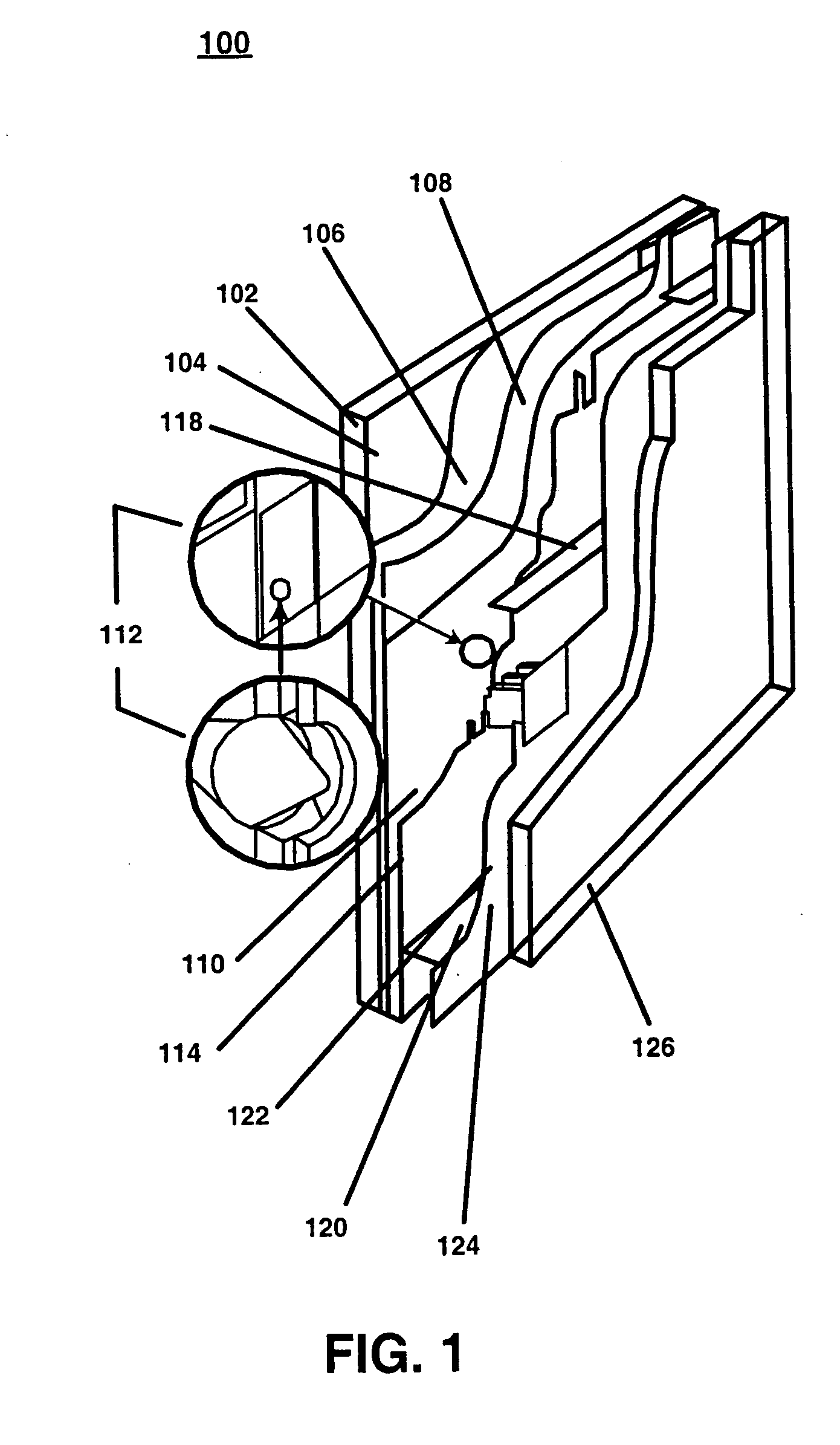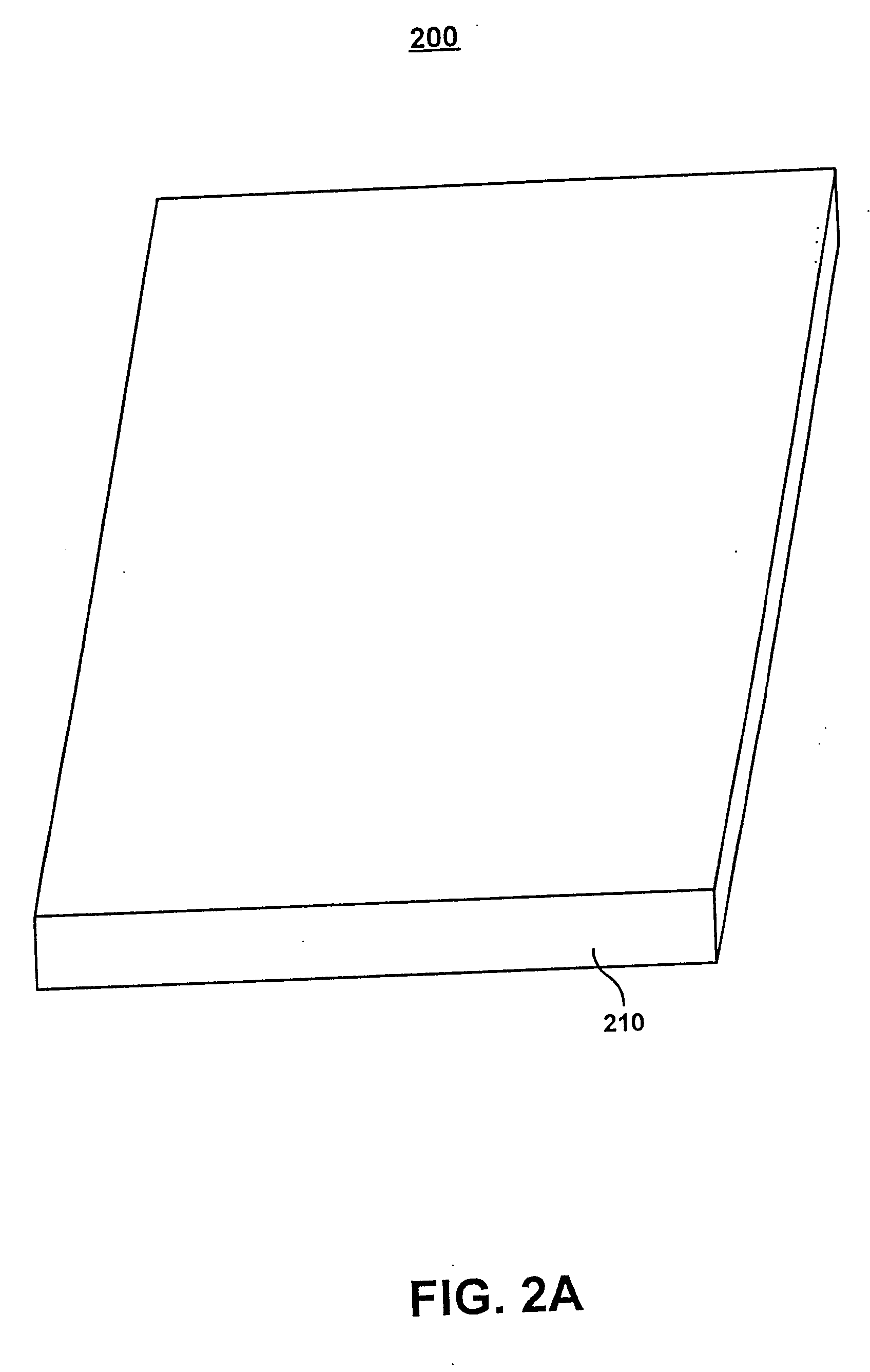Method of patterning wall and phosphor well matrix utilizing glass
a technology of phosphor well matrix and patterning wall, which is applied in the manufacture of electrode systems, cold cathode manufacturing, and electric discharge tube/lamp manufacture, etc. it can solve the problems of requiring yet more power for backlighting, affecting the quality of fpds, and the difficulty of adjusting the pixel switching element, so as to reduce the emitted outgasses, increase the reflective properties, and increase the effect of luminous efficiency
- Summary
- Abstract
- Description
- Claims
- Application Information
AI Technical Summary
Benefits of technology
Problems solved by technology
Method used
Image
Examples
Embodiment Construction
[0046] A method of fabricating a support structure utilizable in display device assembly is described. In the following description, for purposes of explanation, numerous specific details are set forth in order to provide a thorough understanding of the present invention. It will be obvious, however, to one skilled in the art that the present invention may be practiced without these specific details. In other instances, well-known structures and devices are shown in block diagram form in order to avoid obscuring the present invention.
[0047] Some portions of the detailed descriptions, which follow, are presented in terms of procedures, steps, processes, and other symbolic representations of operations concurrent with and implemented during the construction of a display device. These descriptions and representations are the means used by those skilled in the display device fabrication and processing arts to most effectively convey the substance of their work to others skilled in the ...
PUM
| Property | Measurement | Unit |
|---|---|---|
| size | aaaaa | aaaaa |
| thickness | aaaaa | aaaaa |
| grit size | aaaaa | aaaaa |
Abstract
Description
Claims
Application Information
 Login to View More
Login to View More - R&D
- Intellectual Property
- Life Sciences
- Materials
- Tech Scout
- Unparalleled Data Quality
- Higher Quality Content
- 60% Fewer Hallucinations
Browse by: Latest US Patents, China's latest patents, Technical Efficacy Thesaurus, Application Domain, Technology Topic, Popular Technical Reports.
© 2025 PatSnap. All rights reserved.Legal|Privacy policy|Modern Slavery Act Transparency Statement|Sitemap|About US| Contact US: help@patsnap.com



